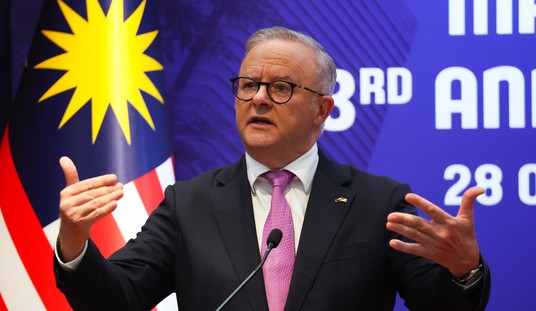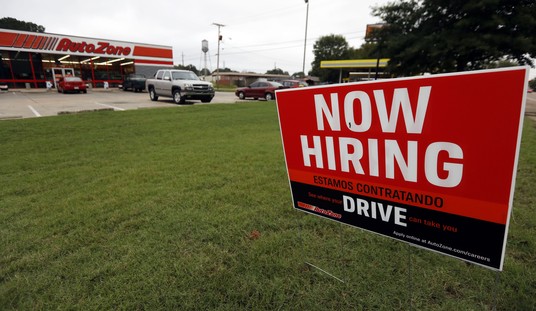Troubled about the recent scourge of “fake news,” the plague that suddenly descended upon us over the last few months? Bernard Goldberg, the author of the seminal book Bias* and a veteran newsman, offers us some perspective on “fake news” and its use by the same people engaging in hysterics over it. Long before Donald Trump even thought about going into politics — and long before the Internet — mainstream media outlets ginned up their own versions of “fake news,” mostly as vanity projects … or what we would call “virtue signaling” today:
Long before fake news became a hot topic, liberals in the mainstream media were practicing their own special brand of fake news. They weren’t misleading the public for malicious reasons; quite the opposite. They were simply showing off their humanity.
The best examples of this fake news-for-a-good-cause go back to the 1980s, when two of the biggest stories in America involved the rise in homelessness (in the age of Reagan) and the national scare over a new disease called AIDS. I was a correspondent at CBS News at the time and I witnessed first hand how – and why — the media got both those stories monumentally wrong.
Goldberg explains that both homelessness and AIDS were real problems, not fake ones, but the media coverage deliberately faked major parts of them in order to stoke panic, drive government spending, and viewership. They manipulated the stories to exploit the audience in ways that served their agenda. That agenda wasn’t entirely partisan, but it certainly played out that way at times. The homelessness crisis seemed to disappear from the media radar when the Clintons took office. One has to wonder whether it will return when the Obamas leave it.
Faked news in the mainstream media matters a lot more than “social media clowns,” Goldberg argues:
And in many ways the mainstream journalism version of fake news is worse than what the social media version, where jerks put out ridiculous stories about non-existent underage sex rings run by Hillary Clinton out of a pizza parlor.
Unlike the social media clowns, mainstream journalists have legitimacy. They help set the national agenda. They influence legislation. And it’s not just about fake homeless and AIDS stories. They’re still putting out fake news – about the supposed sexist wage gap between men and women doing the same job with the same experience (– if that were true why wouldn’t companies only hire women and save a boatload of money in labor costs?); about the epidemic of rape on college campuses; about the 99 percent of scientists who supposedly believe Al Gore’s version of global warming and think everyone else is an ignorant science “denier”.
But hey, they’re faking the news for good causes, right?
Goldberg doesn’t even get around to his former network’s attempt to hijack a presidential election in 2004 with faked memos from the National Guard about George W. Bush’s service. (He’s written plenty about it in the past, however, so he’s not shy about discussing it.) CBS disavowed the report and disciplined those involved in it when it blew up in their face, but that hasn’t stopped other media elites from trying to resurrect it. Hollywood even made a major motion picture about it, ironically called Truth, that essentially argued as Dan Rather did that the memos were “fake but accurate.” That came out under Sony’s banner — a major media conglomerate, not an obscure website with an Alexa rank of two zillion.
Now, that’s fake news with some impact. But why stop there? We can include the serial fabulism of Stephen Glass at The New Republic, whose stories were unquestioned while attacking conservatives at CPAC and elsewhere, and only got properly checked out when he trod on someone else’s beat (Forbes). More recently, Rolling Stone published a story that ruined the lives of dozens of people at the University of Virginia over a pack of lies that were intended to push a social panic over rapes on campuses — which also got exposed by treading on someone else’s turf (T. Rees Shapiro and the Washington Post). The examples go on and on, and those are the “fake news” stories we know about.
Some of the “fake news” comes from propaganda efforts from hostile regimes, as John Schindler reminds us, about which the Obama administration declined to do anything. But no one — no one — has put forward any evidence of a correlation between so-called “fake news” propagated on social media platforms like Facebook and voting behavior, let alone a causal relationship. The story that stoked this panic took aim at clicks at silly nonsense on low-traffic websites and compared them to clicks on four anti-Trump opinion pieces that Buzzfeed considered “real news.”
The social panic over “fake news” is just another projection of media and cultural elites to explain their inability to convince voters that they know better about what’s good for us, as I wrote last month at The Week:
In the wake of a stunning election result, many people — especially in the media — have struggled for an explanation. Rather than acknowledge the obvious and prosaic answer — that voters in swing states chose change rather than the status quo — analysts have sought a Unified Theory of Donald Trump’s Success. Trump couldn’t possibly have won fair and square, the assumption goes, so all that’s left is to identify whatever went wrong and banish it so this never happens again. …
Rather than deal with the lack of connection that Clinton and Democrats made with voters — including in House, Senate, and state legislative races — Democrats and the media would prefer to reject those voters as hicks and rubes who can’t tell the difference between facts and opinions, and between false stories and facts. It goes beyond a lack of empathy; it’s outright contempt.
That contempt from elites in media and politics may or may not have produced the electoral results seen two weeks ago, but it certainly explains the shock that has resulted from it. That contempt is also reflected in the push to shut down commentary and pressure Facebook into editing their social media network to allow only those sources deemed acceptable by those in power, politically and culturally. They are creating a new social panic within their own circles and doubling down on paternalism. Don’t expect that to end well when the midterm elections roll around in two years.
Bill Whittle reverses that contempt in this masterful Fisking of Hillary Clinton’s attempts at blame-throwing this week. The subtext of this speech is quite clear: The American people are idiots:
“Maybe this is all a way to get conservative news sources to shut up,” Whittle concludes. There’s no maybe about it. This social panic is all about the loss of control by mainstream media as gatekeepers on information, a trend that started with Rathergate and is only accelerating as their contempt for their audience becomes clear.
Note * – Full disclosure: I wrote the foreword for the most recent release of Bias. If you haven’t read the book, pick up any edition of it.








Join the conversation as a VIP Member